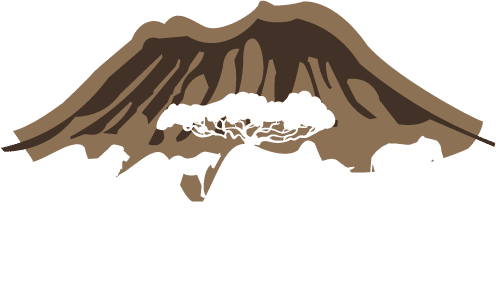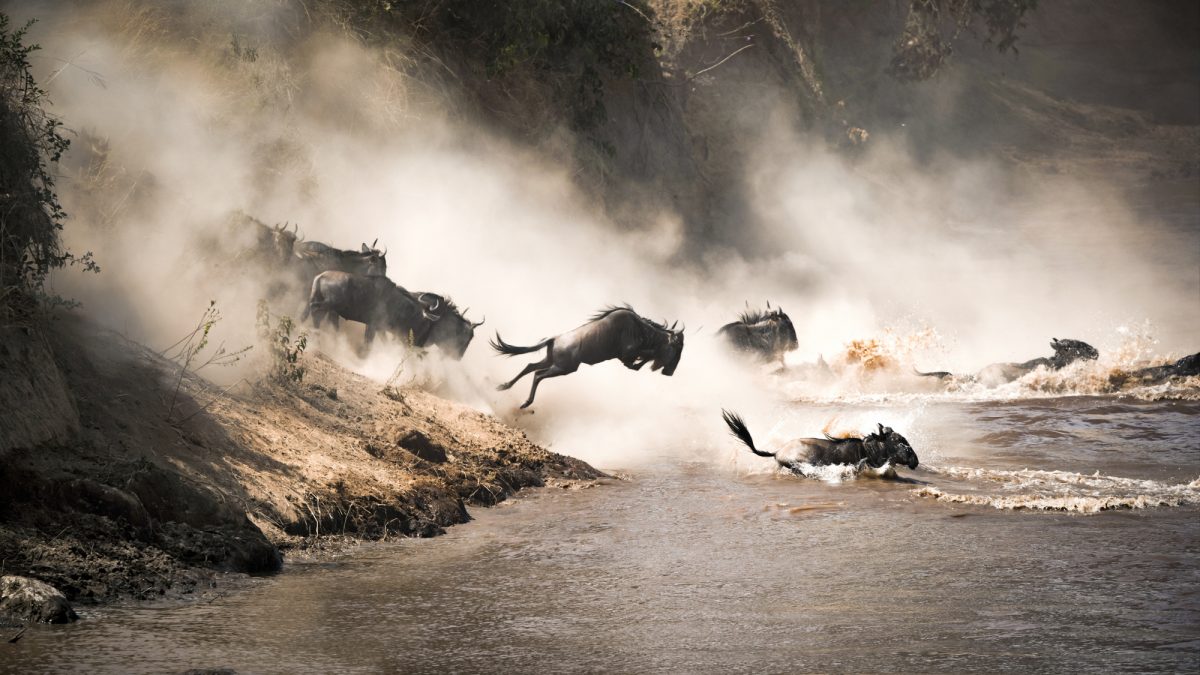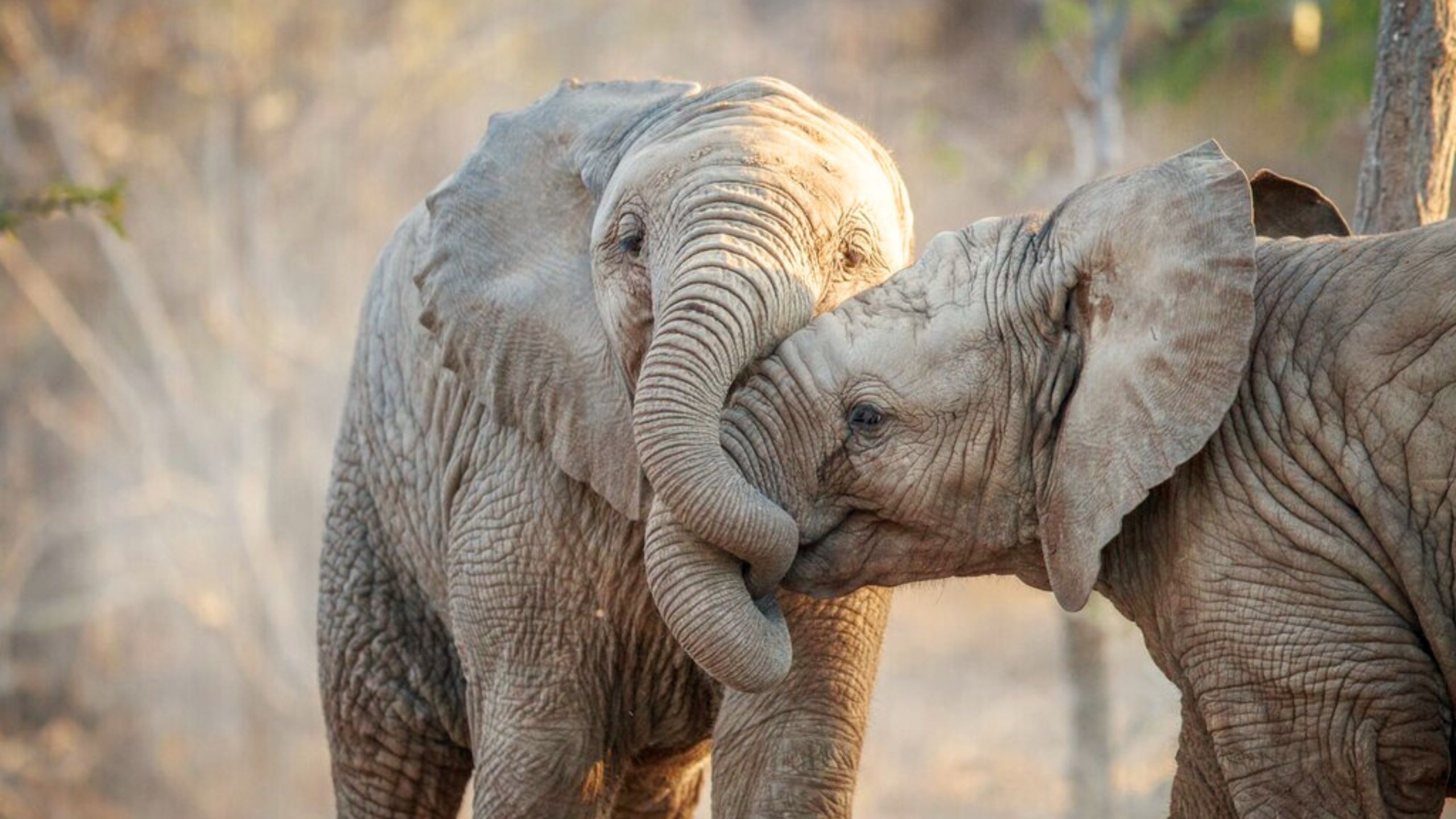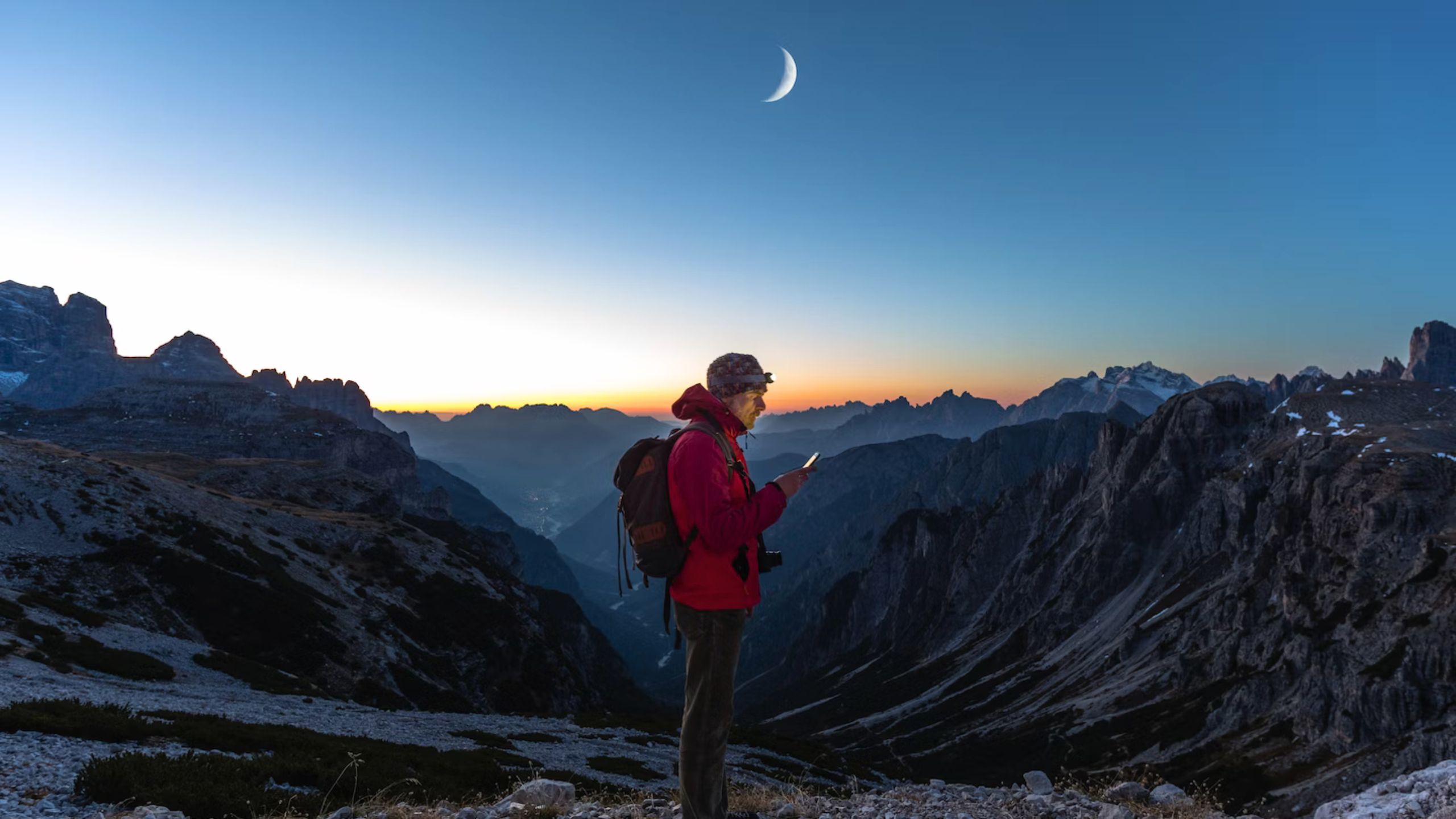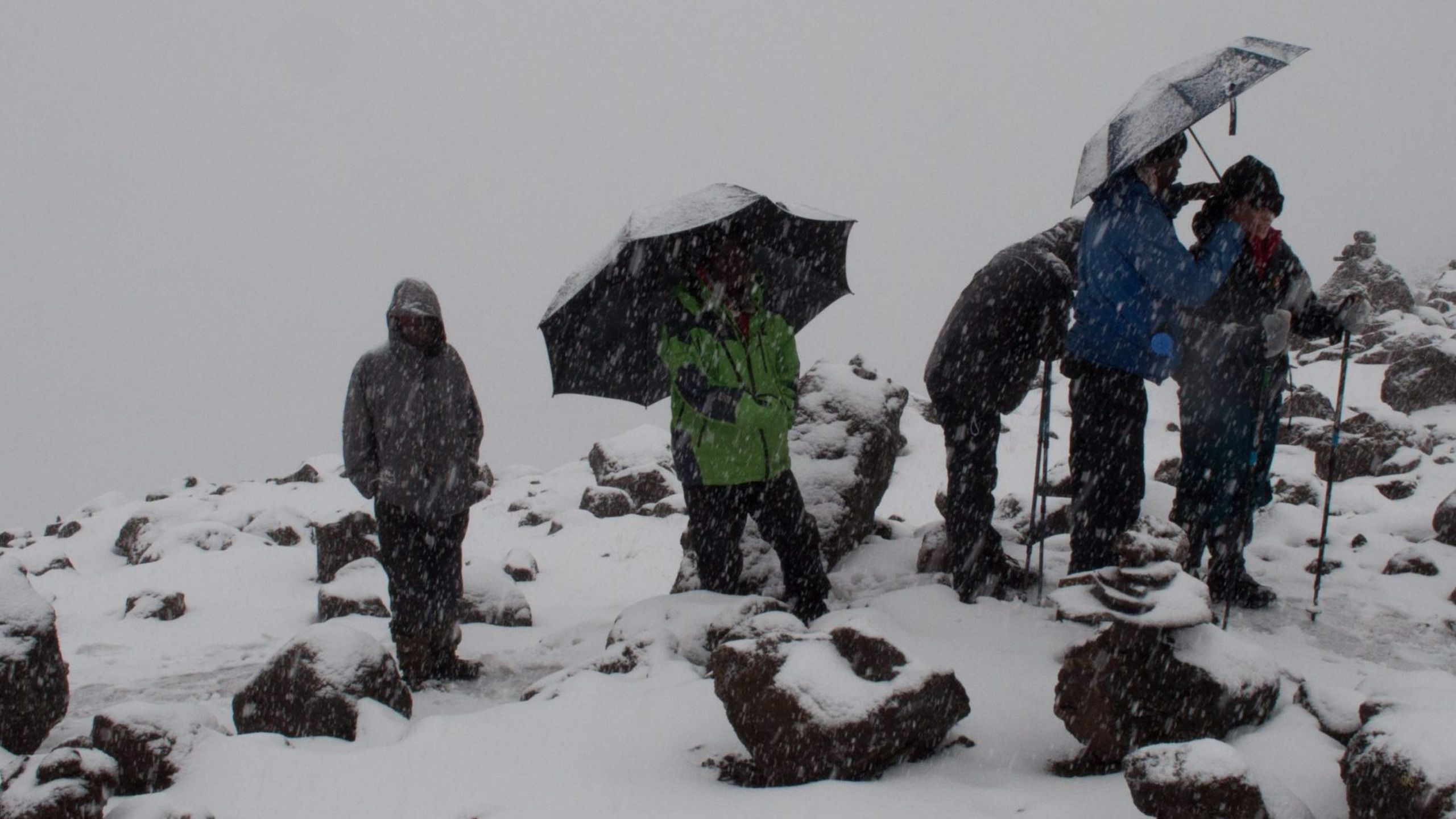Tanzania is one of Africa’s classic safari destinations, most famous for the great wildebeest migration where a herd of some two million wildebeest, zebra and gazelle make their epic annual journey—with numerous predators hot on their heels.
But while the migration steals the lion’s share (groan) of the attention, there’s a great deal more to the country, both in its range of wildlife and non-safari action. Beyond the Big Five, you’ll find world-class birdwatching, some of the best chimpanzee tracking anywhere in Africa, history and beaches on the coast, and some incredible trekking at Kilimanjaro.
Figuring out where to go, when to go, and what to do can be tricky, so here’s our essential guide to the best safaris in Tanzania. Dig in and discover the magic of Tanzania, you’re in for a ride!
Tanzania’s best safari parks and camps
Where to go on safari in Tanzania
Tanzania has three main safari regions: the North, Southern Tanzania, and Western Tanzania.
By far the most popular safari region is the north of Tanzania, easily accessible from Kilimanjaro International Airport or the domestic Arusha Airport. This region is home to the famed Serengeti, along with Tarangire National Park, Ngorongoro Crater and Lake Manyara, which together constitute the popular “Northern Circuit,” Tanzania’s safari best-seller.
Far less visited than the north, the parks of southern Tanzania suit those who’ve already been to the Serengeti, or popular Big Five destinations elsewhere, and are seeking a wilder experience. There are two major destinations here: the Selous and Ruaha.
Western Tanzania is the least visited of the three main safari regions. Because it’s not easily accessible, it’s costly to travel here. It’s roughly a four-hour light aircraft flight from the main hubs of Arusha or Dar es Salaam. There are two scheduled flights a week, but these are also quite expensive; driving will take a couple of days. But if money isn’t an issue, you’ll be rewarded with a remote safari experience largely to yourself. Many travellers will come out west to track the chimps of Mahale.
Ready to go? Read on for our run-down on Tanzania’s best safari parks and reserves.
Serengeti National Park
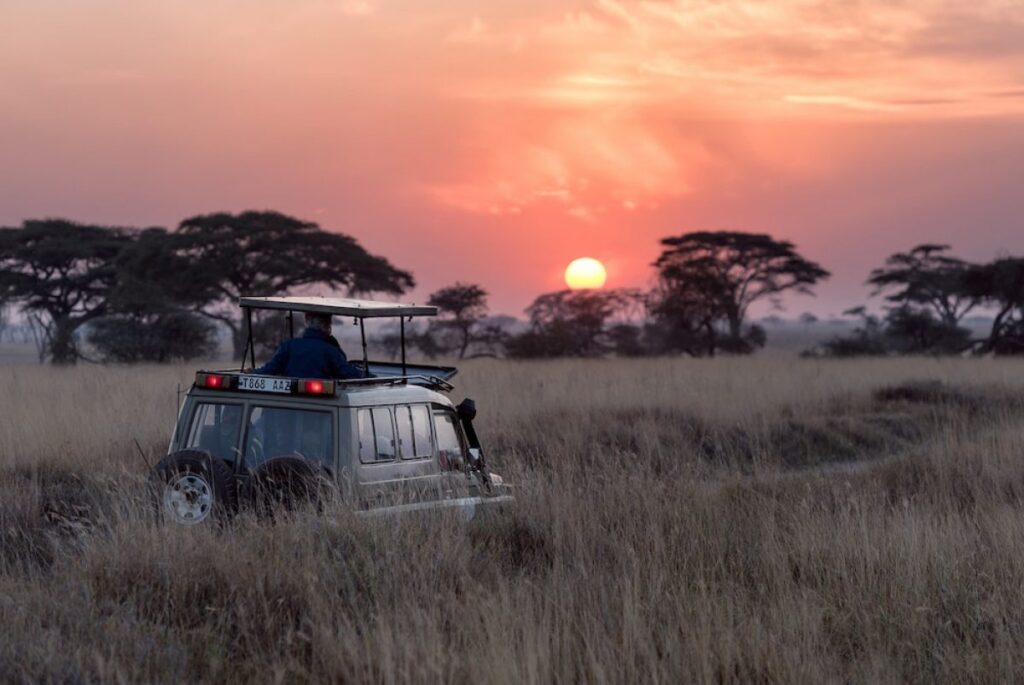
Best Safaris for: Migration safaris & river crossings
The big-ticket park is the 12,000-square-mile Serengeti, home to the great wildebeest migration and a healthy population of big cats: lions, leopards and cheetahs. During peak season— July and August—when the famous wildebeest river crossings coincide with northern hemisphere summer holidays, the park can be very busy.
There are four main regions in the Serengeti; the Western Corridor, the Seronera Valley, Lobo/Kogatende in the north, and the Southern Plains.
There are several private reserves in the Serengeti that offer the same wildlife experience but without the crowds such as the Grumeti Reserve but you’ll have to pay top dollar to stay there.
At the heart of the Serengeti lies the Seronera River and surrounding valley. This is a good area for year-round big cats and grazing herbivores.
The northern regions of Kogatende and Lamai, on the banks of the Mara River, are further off the beaten path and are good for catching the famed river crossings during summer months with far fewer tourists than across the border in Kenya’s Masai Mara.
Best safaris camps & lodges
There are countless excellent safari camps and lodges that span the full spectrum of budgets. A smattering of the best regarded camps include:
- Serengeti Safari Camp: A top-end deluxe mobile safari camp which moves around five times per season to keep up with the constantly changing migration.
- Serengeti Serena Safari Lodge: An upmarket safari lodge (fixed location) in the Seronera area with accommodation designs influenced by traditional Tanzanian village with thatched rondavels.
- Kiota Camp: A solid mid-market mobile camp in the Seronera River Valley area.
- Sayari Camp: Arguably one of the top camps in the northern Serengeti, well away from the crowds further south.
Tarangire National Park

Best Safaris for: Iconic baobab trees & fewer crowds
Tarangire, just south of the bird haven Lake Manyara, is the antidote to the crowds of the Serengeti. There are large herds of elephants, huge baobab trees, lions and even wild dogs. In the dry season, the park has a particularly high concentration of mammals. July to October are the best months for big game viewing, outside these months the park is pleasantly quiet.
As with the Serengeti, there are some private reserves around the national park, offering more exclusivity, generally at a higher cost.
Best safaris camps & lodges
Popular safari camps in the Tarangire area include:
- Tarangire River Camp: A tented camp with stunning views over the Tarangire River and spacious accommodation.
- Kuro Tarangire: A high-end camp conveniently located near Kuro Airstrip and far from the crowds. Great for elephants during the dry season, July-October.
- Oliver’s Camp: One of the top rated camps in the region, with unparalleled game viewing and a friendly, unstuffy vibe.
Ngorongoro Crater

Best Safaris for: Incredible crater views
The other major tourist attraction in the Northern Circuit is the Ngorongoro Crater, a UNESCO World Heritage Site and thought to be the world’s largest inactive, intact volcanic caldera that isn’t filled with water. The crater is home to an estimated 25,000 large animals, including elephants, giraffes, lions and black rhinos.
It’s a year-round location for wildlife, although the crater gets crowded during peak months.
There are no camps inside the crater, but some perch up on the rim, with incredible views. It’s also possible to stay further out in the wider Ngorongoro Conservation Area and do a day-trip into the crater. Look for accommodation close to the access road to maximise your time.
Best safaris camps & lodges
Recommended safari camps and lodges in the Ngorongoro area include:
- Ngorongoro Serena Safari Lodge: A good value mid-market permanent lodge that is conveniently located near the entrance to the Ngorongoro Crater.
- Rhotia Valley Tented Lodge: A rustic but great value camp which was established to support a local community tourism project. Rhotia Valley camp is well located for the crater and as a jump off for nearby Lake Manyara.
- Rhino Lodge: Another simple and economical lodge situated very close to the crater rim. Fairly basic but excellent value.
- Entamanu Ngorongoro: At the other end of the spectrum, a deluxe safari camp that offers a retreat from the crowds drawn to the Ngorongoro. Good sunrise views over the crater.
Lake Manyara National Park
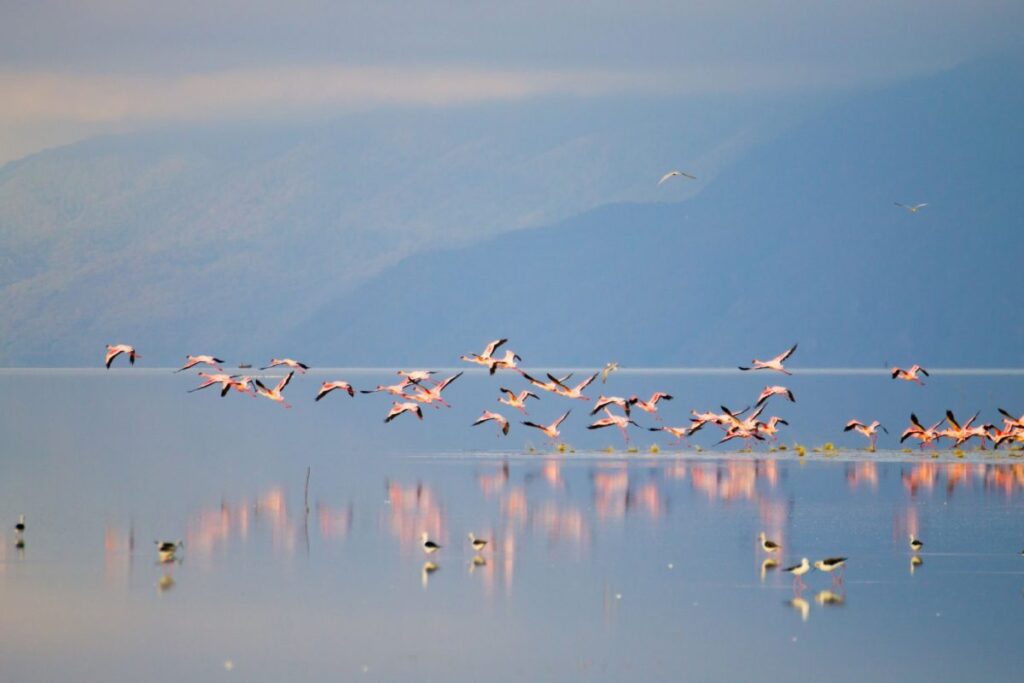
Best Safaris for: Birdwatching and tree-climbing lions
Just to the north of Tarangire National Park, Lake Manyara National Park is a narrow, deeply forested strip of land that sits in the shadow of a dramatic wall in the Great Rift escarpment.
The lake is a haven for some 350 species of waterbirds and the park is famous for its population of tree-climbing lions, as well as one of Tanzania’s most-studied elephant populations. In addition to wildlife drives, walking safaris are possible, and there’s a treetop walkway that takes you up into the forest canopy.
Best safaris camps & lodges
Some of the best regarded safari camps around Lake Manyara include:
- Lake Manyara Tree Lodge: Super high-end with the only location actually inside the park.
- Manyara Ranch: A higher-end camp with private access to the vast Manyara Ranch Conservancy. Conveniently located between Tarangire and Lake Manyara National Parks and just two hours from Ngorongoro Crater.
- Lake Manyara Serena Safari Lodge: A solid mid-market permanent lodge, twenty minutes from the park entrance. Simple, thatch-style accommodations but excellent value.
- Little Chem Chem Safari Lodge: Top of the top-end tented camp; small, intimate and exclusive. Expect to pay top dollar.
Selous Game Reserve

Best Safaris for: High-end safaris
The Selous Game Reserve is one of the largest protected areas in Africa at 19,000 square miles – bigger than Switzerland. With only a few camps, it feels far more remote than the northern parks.
As well as lions, leopards, elephants, black rhinos, hippos and buffalos, the Selous is a key area for endangered wild dogs. Poaching has led to a massive decline in species such as elephants – so although there are many animals to see, they’re not as densely populated as in the Serengeti, for example. There are several photo safari camps, but most of the reserve is for hunting.
Best safaris camps & lodges
- Selous Impala Camp: Less expensive than other camps in the Selous, probably the closest to mid-market but still far from cheap. Some family-oriented accommodations.
- Lake Manze Tented Camp: A good value camp on the shores of Lake Manze with plenty of resident wildlife close by.
- Siwandu Camp: Super high-end camp in the Siwandu, with tents located on a picturesque river bank. Conveniently located for flights from Dar es Salaam.
Ruaha National Park
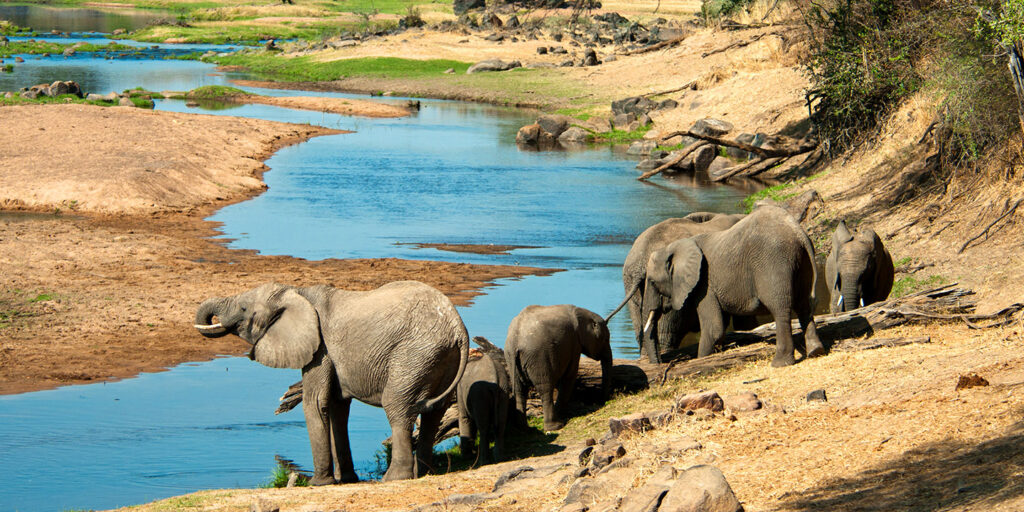
Best Safaris for: Walking safaris
Ruaha is smaller than the Selous reserve but is Tanzania’s largest national park. It’s home to scattered baobabs, grasslands and rolling hills.
There are lions, leopards and wild dogs here – and, like the Selous, relatively few tourists. You’ll find a mixture of luxury lodges and basic fly-camping operations for walking safaris.
Best safaris camps & lodges
A scattering of the area’s best regarded safari camps include:
- Mdonya Old River Camp: A small, simple, and great value camp not far from the Mdonya Falls.
- Ikuka Safari Camp: High end experience at mid-range price. An intimate camp, with stunning views from the Mwagusi Escarpment.
- Usangu Expedition Camp: Higher-end mobile camp with excellent access to the special wetland wildlife of nearby Ihefu Swamp.
Mahale Mountains National Park
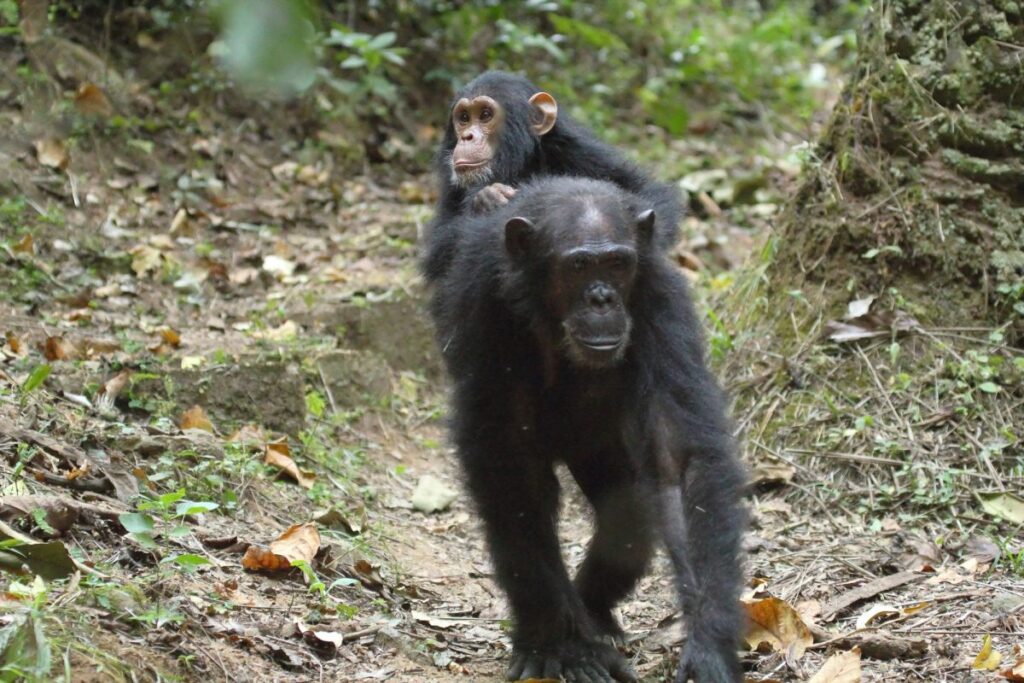
Best safaris for: Chimpanzee & primate safaris
On the sandy banks of Lake Tanganyika, Mahale is a mountainous park known for its habituated chimpanzees you can visit in the forest. There are other primates – from vervets to the red colobus monkey – and the driest months (August to October) are the best time to trek through the forest.
There is a scattering of camps and lodges from where you can organise chimp trekking, including one ‘barefoot luxury’ option, Greystoke Mahale, and a government-run backpackers at the park HQ.
Best safaris camps & lodges
- Greystoke Mahale Camp: Top-notch, world-renowned chimp tracking camp situated in a stunning spot on the shores of Lake Tanganyika.
- Nkungwe Beach Lodge: (Relatively) budget friendly with simple charm and great value for money. Also located on the Tanganyika beachfront, equally good for chimp tracking.
Katavi National Park
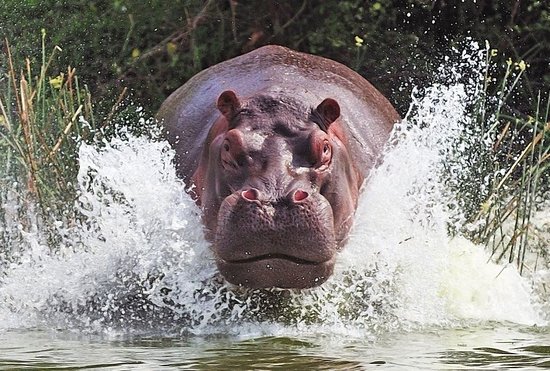
Best for: Crowd-free safaris
The third largest national park in Tanzania, but with a fraction of the visitors, Katavi feels very distant from the likes of the Serengeti. Indeed, it is estimated that Katavi gets as many visitors in an entire year as the Serengeti draws per day.
In the dry season, there are great wildlife spotting opportunities, with big herds of buffalos, lions, elephants and lots of plains game (topis, zebras and impalas).
With just a handful of small camps in the park and in the adjoining game reserves of Rukwa, Luafi and Lukwati, there will be few other vehicles with which to contend.
Best safaris camps & lodges
- Chada Katavi Camp: Remote, quiet and well off the beaten track. Suited for adventurous safari goers, with good game drives plus escorted walking safari and night safari.
- Katavi Wildlife Camp: Slightly more affordable option, although far from cheap – largely due to the remote location and transportation distances.
